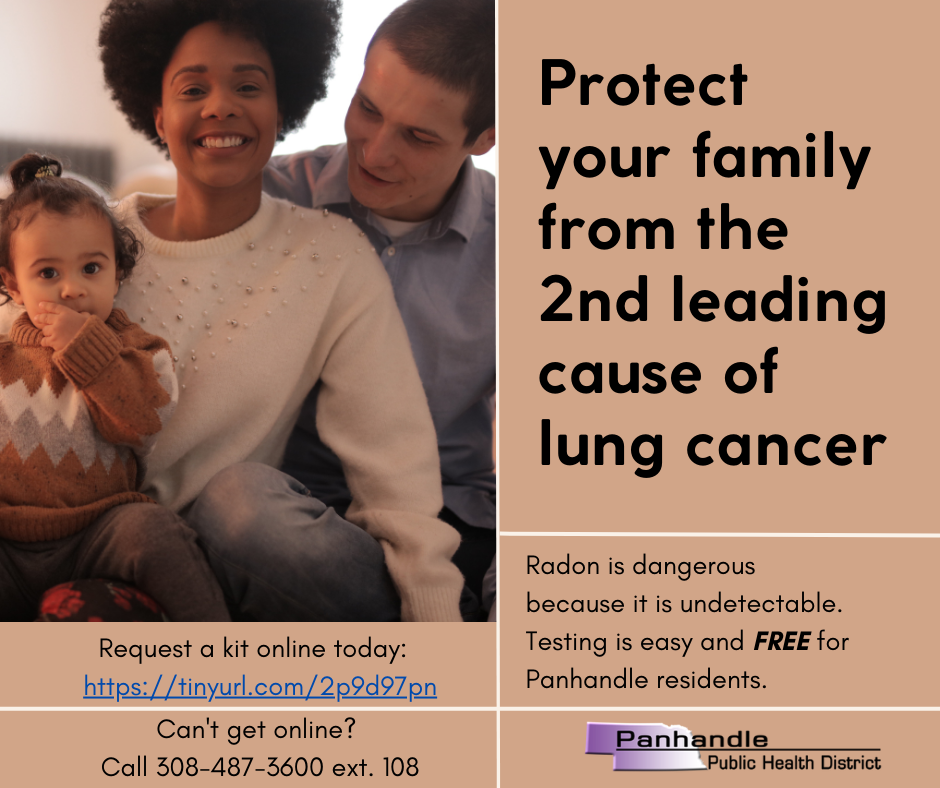![]()

The air we breathe is essential to living a healthy life. Understanding what can affect your air quality can ensure that you are taking all the necessary steps to keep your home and family healthy. This is part one of a three-part series on air quality to help address some common issues that can occur that affect your air indoors and out.
Let’s Talk About Radon
Radon is a naturally occurring radioactive gas produced by the breakdown of uranium in soil, rock, and water. The amount of radon found in the soil depends on the soil chemistry, which can vary from house to house.
The amount of radon that escapes from the soil to enter a house depends on;
- The weather
- Soil absorbency
- Soil moisture
- The suction within the house
Air pressure inside your home is usually lower than pressure in the soil around your home’s foundation. Because of this difference, your home acts like a vacuum, drawing radon in through foundation cracks and other openings.
In Nebraska, 1 out of every 2 homes tested have high radon levels. A neighbor’s test result could be different from your own test results. Radon levels can vary greatly from home to home and can be a problem in homes of all types: old, new, drafty, insulated, or homes without basements.
Health Effects of Radon
There are no immediate symptoms from exposure to radon. Smokers are at higher risk of developing radon-induced lung cancer. Lung cancer is the only health effect which has been definitively linked with radon exposure.
Lung cancer would usually occur years (5-25) after exposure. Radon is dangerous because it is undetectable; you cannot see, smell, or taste it. Radon is inhaled to the lungs and can become trapped in the lungs. If trapped radon in the lungs begins to decay, energy is released in alpha particles. These particles strike the cells lining the lungs and causes damage to the DNA.
Finding Radon in the Home
Testing is the only way to know if radon is present in your home. Short-term and long-term test kits can help homeowners test levels in their home and help them make informed decisions on possible mitigation.
Mitigation systems involve a suction point, plastic ventilation pipe, and radon fan. A mitigation system must be installed by a licensed professional. If you have found radon in your home and want to consider mitigation, call Professional Inspection Services of Scottsbluff at 308-631-3388 to discuss mitigation systems and installation.
Panhandle residents can request a free test kit from PPHD by calling 308-487-3600 ext. 108 or going online: https://tinyurl.com/2p9d97pn. Kits are available to those that live in, Banner, Box Butte, Cheyenne, Dawes, Deuel, Garden, Grant, Kimball, Morrill, Scotts Bluff, Sheridan, and Sioux counties.
To sign up for PPHD’s news releases, click here or visit www.pphd.ne.gov. Panhandle Public Health District is working together to improve the health, safety, and quality of life for all who live, learn, work, and play in the Panhandle. Our vision is that we are a healthier and safer Panhandle Community. Visit our website www.pphd.ne.gov.
Source: https://www.epa.gov/radon
